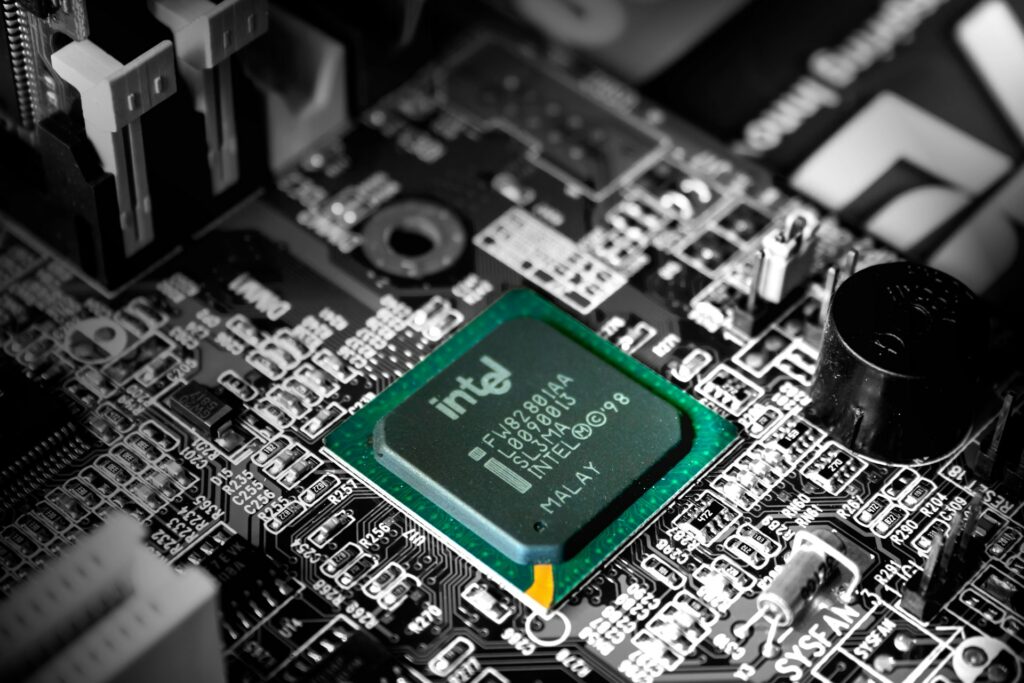Introducing Intel’s Next-Generation Processors: What They Mean for Computing in Everyday Life

Introducing Intel’s Next-Generation Processors: What They Mean for Computing in Everyday Life
More than just a performance boost, the next generation of chips that Intel will release is more than that. The way in which our daily gadgets manage workloads, adapt to the requirements of current applications, and provide a balance between performance, battery economy, and artificial intelligence capabilities is a paradigm change that these processors represent. The next-generation central processing units (CPUs) from Intel are going to revolutionize the way you interact with your computer, regardless of whether you are a student, a professional, a gamer, or just someone who loves streaming and surfing.
Following is a detailed breakdown of the modifications, features, and advantages that are applicable in the actual world.
1. An Advancement in the Architecture of Processing
Next-generation CPUs from Intel are built on a streamlined design that has an emphasis on improved performance per watt. This allows for speedier processes while simultaneously reducing the amount of energy that is used.
2. Technology for Process Nodes That Are Smaller
By shifting to manufacturing technologies that are smaller than nanometers, more transistors can be crammed onto each chip, which increases the raw speed of the chip and makes it possible to do more complicated processing jobs.
3. Acceleration of Artificial Intelligence at the Core Level Built-in AI accelerators will make it possible for common applications like as real-time language translation, background picture enhancement, and voice recognition to operate more quickly without putting an excessive amount of strain on the central processing unit.
4. Effectiveness and Overall Performance Holding the Core
Tasks are intelligently distributed via hybrid design; performance cores are responsible for handling high workloads, while efficiency cores are in charge of handling low-demand or background job responsibilities.
5. A Speed That Is Noticable in Common Applications
When you open applications, browse files, and use regular software, you will experience less latency and quicker loading times. This will make the experience more fluid.
6. An Encouragement for Creative Practitioners
When working huge files, video editors, graphic designers, and music producers will experience faster rendering, faster exporting, and increased multitasking capabilities.
7. The gaming experience becomes more fluid
For gamers who have powerful graphics processing units (GPUs), having a powerful central processing unit (CPU) is important. The bottlenecks that are caused by these processors are reduced, frame stability is improved, and game physics are handled more effectively.
8. Battery Life That Is Consistently Extended
In spite of the fact that they are able to do demanding activities, laptops that use these central processing units are able to function for extended periods of time without needing to be charged.
9. Thermal Management for the Operation of Coolant Systems
When systems are subjected to intense workloads, improved heat dissipation and sophisticated thermal management assist to keep them cool. This helps to reduce fan noise and increase the life of associated components.
10. Improvements to the Streaming and Playback of Videos
The viewing of high-resolution videos is made more fluid by integrated media engines, which are capable of seamlessly handling 4K, 8K, and HDR material without stuttering.
11. Improved Safety Measures at the Hardware Level Online transactions and the storage of sensitive data are made safer by the inclusion of Level Security features that are incorporated into the chip. These measures protect against malware and increase the number of vulnerabilities.
12. Compatibility with the Most Recent Connectivity Standards
As a result of the new CPUs’ compatibility with chipsets that enable Wi-Fi 7 and speedier Bluetooth, the online performance of streaming, gaming, and file transfers has been significantly improved.
13. Support for Internet of Things Devices and Edge Computing
These central processing units are meant to handle edge processing activities, which provides a more responsive experience for connected devices and smart home devices.
14. AI-Driven Background Optimization
Systems will automatically distribute resources depending on your activities, which will free up power for work that is now being done while maintaining the efficiency of background services.
15. Increased Capabilities for Multitasking in Contemporary Workflows
It is much simpler to work with several programs, participate in virtual meetings, and save data on the cloud when there are no slowdowns in the system.
16. Prepared to Work with Operating Systems of the Next Generation
CPUs that have been optimized for next versions of Windows and Linux will be able to handle future operating system upgrades with greater ease.
17. Efficiency that is Earth-Friendly
The use of less energy not only extends the life of batteries but also lowers the total amount of power used, which makes computing more environmentally friendly.
18. Advantages for Students in the Real World 19.
Students are going to have access to more responsive technologies for their study and project work, which will include speedier research tools and online classrooms that run more smoothly.
19. Improvements in the Productivity of Professional Offices
Spreadsheets, presentations, and massive databases will all go more quickly, which will result in increased productivity in day-to-day work.
20. Extension of the Device’s Lifespan and Value
Computers that employ these processors will continue to be useful for a number of years to come without seeming to be out of date because of their high level of efficiency and their contemporary appearance.
The next-generation CPUs that Intel is developing are not merely for the purpose of gaining technological bragging rights; they will also immediately enhance the experience of computing in daily life. In order to fulfill the requirements of both the software of today and the software of the future, these central processing units (CPUs) are intended to provide speedier applications, longer battery life, improved gaming, and smoother video chats.
Should you be contemplating the upgrade of your laptop or desktop computer, waiting for these processors might result in improved performance right now as well as an investment that is future-proof for many years to come.







